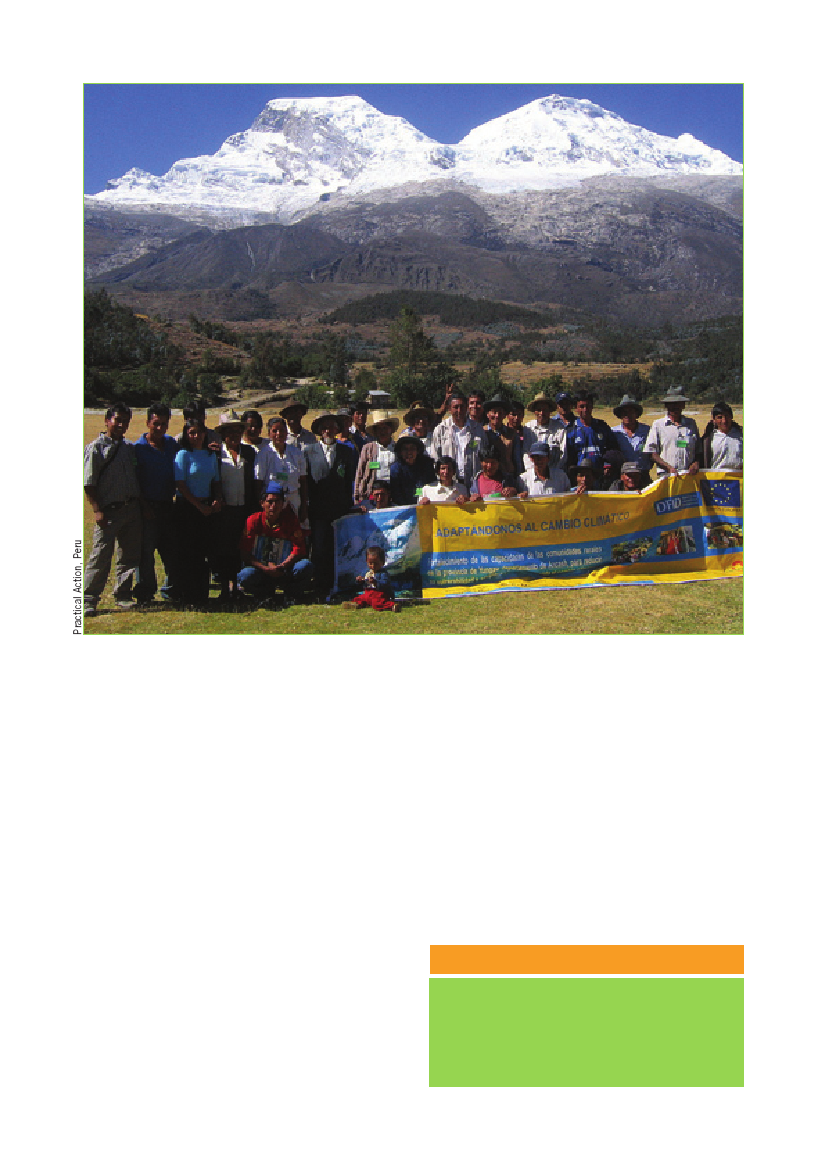
Meeting on adapting to climate change in Peru.
The gradual melting of glaciers is resulting in variability in the availability of water resources
be communicated e.g. demonstrating the effects of
climate change on the poor can add to the imperative
in the developed world to reduce emissions.
• Ensuring access to relevant and timely information.
Geographically specific predictions of the impacts
of climate change, economic policies, etc. can help
communities prepare to adapt. However, accurate
medium-term predictions are rarely available,
therefore information to strengthen communities’
capacity to adapt to change is often more relevant,
e.g. alternative crop varieties, improved water storage,
etc.
• Building confidence and flexibility to learn and
experiment. In order to adapt, communities will need
to explore unfamiliar opportunities, which can require
new skills for managing risk.
Pro-poor policy and practice
Addressing the issues raised in this framework requires
relevant institutions, including government departments,
to understand the integrated nature of vulnerability
and work together to strengthen resilience and
adaptive capacity. Action to influence policy and build
organizational capacity for improved practice is a critical
element within the V2R approach.
Author
Katherine Pasteur
Practical Action
Schumacher Centre for Technology and Development,
Bourton on Dunsmore,
Rugby CV23 9QZ, UK.
Email: Katherine.Pasteur@practicalaction.org.uk
See also
Katherine Pasteur (forthcoming) From Vulnerability to
Resilience (V2R): Guidelines for Analysis and Action
to Build Community Resilience, Practical Action.
Available online at http://www.practicalaction.org/
10